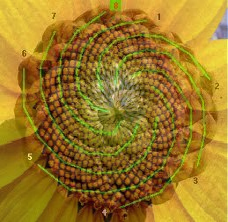Operational Definition of the Scientific Method
Proposing an operational definition of the scientific method consisting of 6 sequential steps: three to produce a hypothesis, and three more to promote this hypothesis to a theory.
It will be seen that scientists wear two hats: self-confidence and humility. Self-confidence is the predominant attribute in the first 3 steps. Then the scientist switches to his "humility hat" for the last 3 steps. Consider the following diagram:

The First Three Steps: Confidence Leads to Hypothesis
- Observe: We don't just see something; we observe it.
- Inquire: We don't just wonder; we inquire.
- Create: We attempt to create an explanation for how or why this observation occurs.
Notice the self-confidence implied in these first 3 steps. We now have a Hypothesis.
The Last Three Steps: Humility Leads to Theory
- Verify: We now attempt to prove the hypothesis, using our resources (test tube, sky telescope,
shovel, etc.) We must also use due diligence here to find out if we're wrong.
- Publish: share with others the benefit of our work, but also give them the opportunity to disagree.
- Orderly Clash: Someone may see a flaw that we have missed. We must be positive, but also reasonably
open-minded, in defending our findings in orderly debate. If we succeed, congratulations are in order -
we have just created a Theory!
A note about simplicity: Sometimes it is believed that simplicity is itself proof of scientific truth, but there are many counterexamples of this idea in the history of science. Of course, simplicity is useful for suggesting creative new ideas, which may turn out to be good discoveries; but other times the conclusion will be wrong.
Therefore: Use simplicity for creativity in step three; do not use it for verification in step four.
Note also that synthesis is a form of simplicity in the larger sense: two entities combined into a simpler whole. Sometimes synthesis leads to a valuable insight; other times to a wrong conclusion. Again: useful for creativity, but not a valid proof in and of itself.
| Solving | Cancer | Method | Space | Fibonacci | Checkers | Map | |
|---|---|---|---|---|---|---|---|

| 
| 
| 
| 
| 
|
||